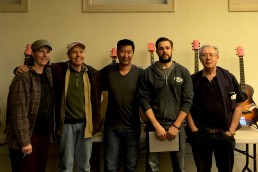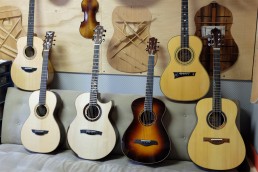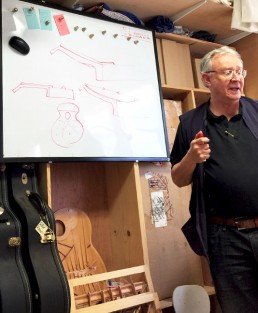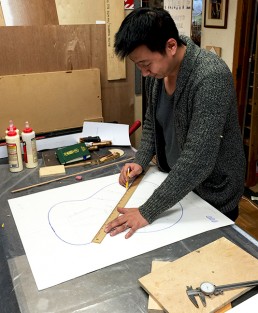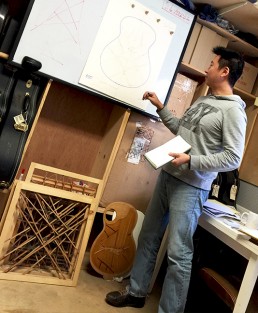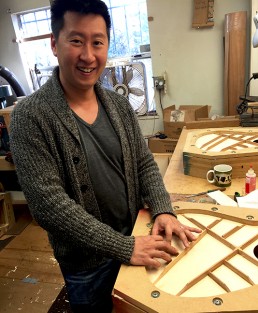From watching instructional videos to reading whatever he could lay his hands on, Hozen never stops exploring for more ways to improve his guitars and ukuleles. “When someone says that my instrument is very good, honestly, I do not feel anything. But if someone says that my instrument is better than the last time, It makes me very happy, ecstatic even,” Hozen said during one of his recent interviews. This is why when he got a copy of “The Responsive Guitar” by famed luthier Ervin Somogyi, he immediately went to his workbench and applied certain concepts. Hearing great improvements, Hozen realized that he is on to something and that reading will not be enough to fully grasp the concepts. He needed to pack his bags (and chisels) to be mentored by the man himself.
It was March 2015 when Hozen went to Oakland, California to further his studies on voicing under Ervin Somogyi. With him was one of his best builds during that time, a Raffles Malaysian Blackwood. He was very eager to find out what was he missing and hear how his “best sounding” guitar becomes better. Over the 2 weeks that he spent understudying Somogyi, he realised that there was so much to the overall instrument that contributes to the voice of the instrument, that everything comes together to create the voice.
“I had this misconception during my early years as a builder that voicing and tap tuning are the same. Then during my time at Ervin’s, I found out that I was only touching the tip of the iceberg.”
“I had this misconception during my early years as a builder that voicing and tap tuning are the same,” as Hozen recalled recently. “Then during my time at Ervin’s, I found out that I was only touching the tip of the iceberg. That in fact, voicing is how everything – from the soundboard, to the bracing, and even the back, sides, and all other things, respond together to make a very responsive instrument,” he continued. “Aside from these, the course also cemented my understanding of the soundboard and how to make it respond to achieve the tone and projection that I want for my instruments. That difference is evident when you compare the ones we built before the course and the ones that we have now,” Hozen added.
“The changes that we made had a very huge impact in our instruments… I often encounter people asking, especially those who knew us since the early days, what changed. They say it is better than ever.”
Inspired and excited, Hozen went back to his workshop ready to take his team to the next level. Understanding that voicing is actually a sum of all parts, Hozen and the team adapted new approaches and techniques in building the instruments. “The changes that we made had a very huge impact in our instruments. The Custom Series guitars exhibited a fuller tone, improved response, and reduced the dead notes and wolf notes. The Private Collection became more articulate, complex, and responsive than any of the instruments that came before it,” said Hozen. “I often encounter people asking, especially those who knew us since the early days, what changed,” Hozen continues, “They say it is better than ever.”

